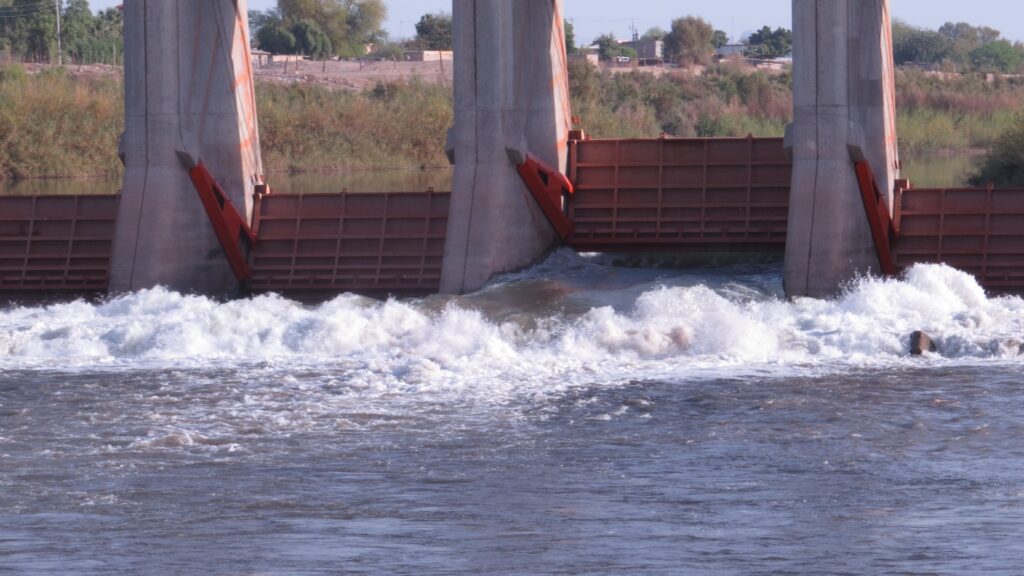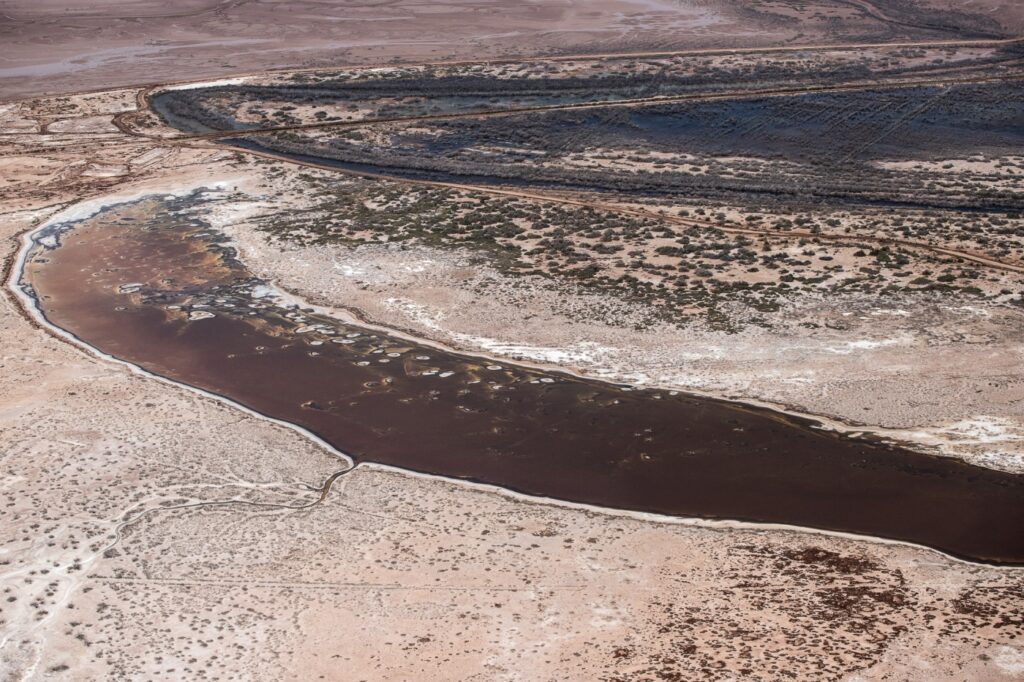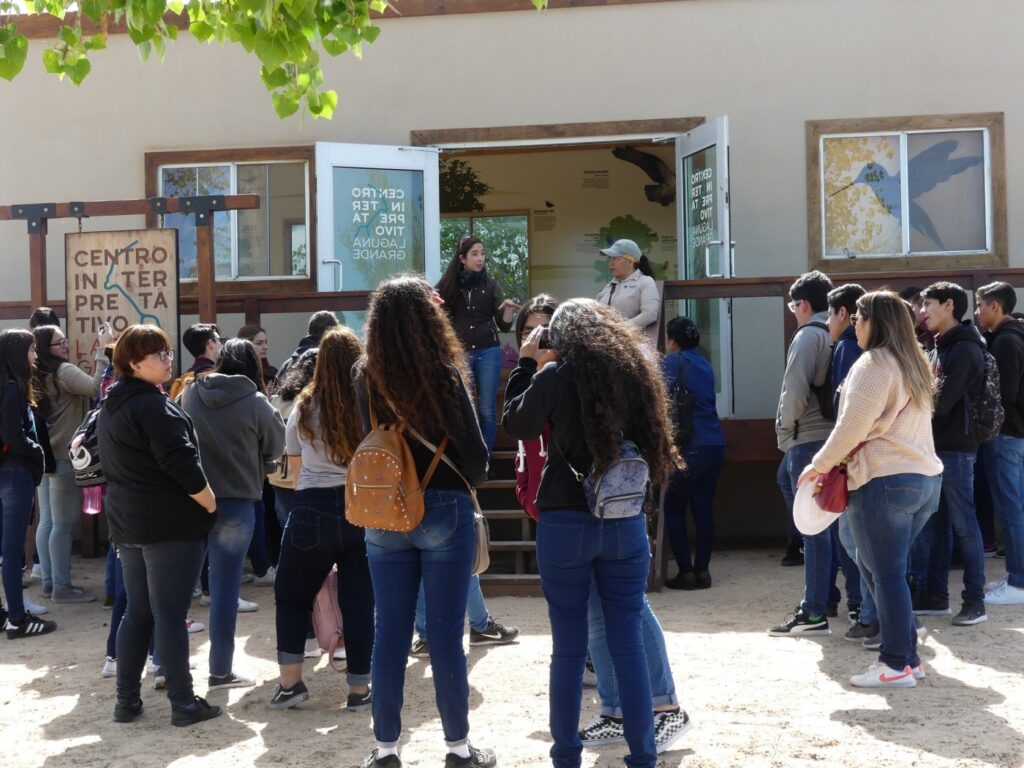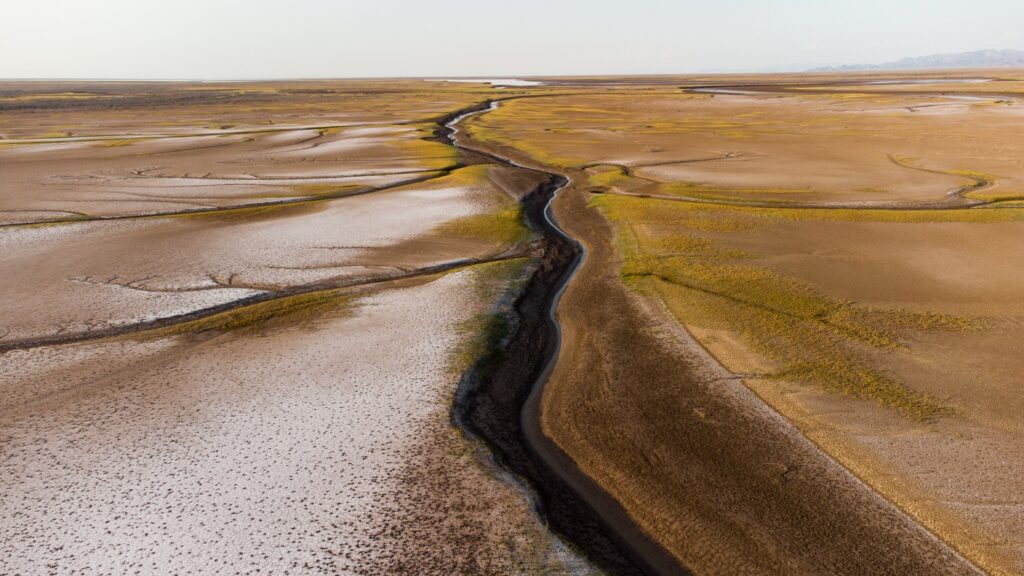
The Colorado River Runs Again
This article originally appeared in Yes! Solutions Journalism.
Featured image: Local residents and kids enjoy the recreational benefits of the flowing river resulting from the planned water releases. PHOTO COURTESY OF RAISE THE RIVER, JESÚS SALAZAR
“It’s not only about wildlife, or birds and trees. It’s also about the people.”
In late spring, Antonia Torres González’ tears rolled freely at the rare sight before her: the Colorado River flowed again in what is usually a parched delta.
Torres González, a member of the Cucapá tribe who grew up in the river delta, couldn’t help but relive memories of childhood romps in the once-lush waterway in northwestern Mexico. “It was like seeing the river come back to life,” she says.
Public News Service · Colorado River Flows Once Again to Gulf of California
On May 1, 2021, the river once again flowed in its delta thanks to an agreement between the United States and Mexico dubbed Minute 323. Through Oct. 11, a total of 35,000 acre-feet of water (11.4 billion gallons) will be released downstream from Morelos Dam on the U.S.-Mexico border to quench the thirst of this long-withered ecosystem.
The mammoth endeavor to rejuvenate the river delta was years in the making and involved dozens of people, including water managers, policymakers, scientists, conservationists, and nonprofits from both sides of the border.

In March 2014, a planned release from Morelos Dam sent water into the dry Colorado River Delta, connecting this river to the sea for the first time in many years. Photo courtesy of Raise the River, Peter McBride.
“We provide a lot of brainpower and blood, sweat, and tears, and commitment to this,” says Nancy Smith, Colorado River Program conservation director at the Nature Conservancy.
A History Dried Up
The decadeslong deterioration of the Colorado River Delta began with the diversion of most of its water to farms and growing city populations in the United States, and by the early 1960s, very little flow made it to the river’s lower reaches. Under a 1944 treaty, 1.5 million acre-feet of water—about 10% of the river’s annual flow—was required to reach Mexico each year, though most of that drenches farmland in the valley of Mexicali, Baja California, without ever reaching the delta that should reconnect the river to the Gulf of California, also known as the Sea of Cortez.

Recent agreements between the countries, including this year’s pulse as well as another eight-week pulse of water back in 2014, ensure collaboration in restoring the delta and managing river water, sharing surpluses and shortages.
The restoration work that grassroots organizers jump-started in the delta region some two decades ago—including the removal of nonnative vegetation and reforestation of thousands of acres of willow, cottonwood, and mesquite trees—would in time become a key factor in the cross-border undertaking. “We had a vision that someday the Colorado River could be connected again to the sea and to local communities,” says Francisco Zamora of the Sonoran Institute in Tucson, Arizona. The nonprofit, which also has offices in Mexicali, works with communities to revive dying ecosystems.

To see the river flowing into the delta today, albeit temporarily, gives him hope that local communities may one day again rely on it for sustenance and recreation. Over the years, restoration work not only has provided local residents with jobs, but also inspired them to believe that the delta can flourish again. Zamora says seeing the river flowing has reinforced that notion, even for young people who had never seen it happen before.
“It’s not only about wildlife, or birds and trees,” he says. “It’s also about the people.”
People-Centered Conservation
Torres González remembers the Colorado River delta as an abundant source of water that sustained multiple generations of Cucapá families living on its banks. “When I was a child, the river was still flowing,” she says. “We bathed in it, we played games, we fished there. We used to drink water from the river, and most of our families used the water to do the wash and for other household chores.”
Gradually, the fish and the water flows diminished, as did the lush, native trees, and other vegetation that families traditionally used for food and medicine, recalls the tribal elder who now lives in a Mexicali neighborhood. “We no longer consume what grew naturally in the wetlands that were there,” Torres González says.
This year’s water delivery will allow nearby communities to enjoy the river again for five months, and directly benefits about 700 acres of restored landscape, Zamora says. “This is an area where you can find many species of birds and some are what we call target species, like the yellow-billed cuckoo.” To thrive, target species require mature cottonwood and willow forest, so their presence in the delta is a good indicator that the habitat is improving and suitable for such birds, he says.

The Sonoran Institute and the Nature Conservancy are part of Raise the River, a coalition of environmental groups from Mexico and the U.S. working to restore the river delta. “The Colorado River Delta used to cover 2 million acres,” Smith says. “It was this vast, watery landscape teeming with birds—really quite extraordinary.”
Smith has no doubt the delta can make a comeback. “One of the really wonderful things we learned from the 2014 pulse flow is that with water, the ecosystem responds,” she says. “The birds return, the cottonwoods and willow trees return, the local and migratory birds have increased—many of which are endangered.”
The 2014 pulse flow released downstream, known as Minute 319, was roughly 105,000 acre-feet of water (about 1% of the river’s annual flow) and transformed the dry delta into a river again for eight weeks. Subsequent scientific studies showed the water release was a boost to vegetation, greening restoration areas and increasing certain bird species—at least for a while. Even though the abundance of birds later diminished, levels remained higher than before 2014, according to a 2018 report from the International Boundary and Water Commission.

Lessons learned from the first water surge helped design the current water delivery to maximize benefits to the delta, Smith says. To keep the water from seeping into the ground early on, which happened in 2014, existing irrigation canals are being used to direct the flow toward restoration sites. Nonprofits and grassroots groups also fund on-the-ground projects in the delta and contribute donor resources to match those of the U.S. and Mexico governments.
“We work hand in hand with the government to do all the science necessary to make sure that we keep making progress and to make sure that whatever environmental water comes across the border is put to the best use,” Smith says.
A Hopefully Wetter Future
For Torres González, seeing the river flowing again, if only briefly, restores her hope in the delta’s resiliency—just like it did her mother, Inocencia González, before she died in June 2021.
“It would benefit us a lot if the water reaches the delta regularly again,” she says. “In this water flow we saw that there were a lot of small fish that could have grown in this river, and it would’ve meant good fishing for the Cucapá.”
As drought and climate change further strain a dwindling Colorado River and other natural resources around the globe, Smith says, international agreements may become more important. She hopes the U.S.-Mexico collaboration will bring about similar arrangements elsewhere.
“If we can restore the river, it will benefit a lot of people, but it also shows that we can protect nature, we can restore nature,” she says. “And if we can do it in the Colorado River, we can do it in other parts of the world.”
LOURDES MEDRANO is an independent writer covering the U.S.-Mexico border. She focuses on illegal immigration, underserved communities, the environment, health, and matters of importance in both the U.S. and neighboring Mexico. She previously worked for daily newspapers, including the Star Tribune in Minneapolis and The Arizona Republic in Phoenix. She is a member of Investigative Reporters and Editors, NAHJ, and the Society of Environmental Journalists. Lourdes is based in Tucson, Arizona, and speaks English and Spanish. She can be reached via Twitter direct message or LinkedIn.
